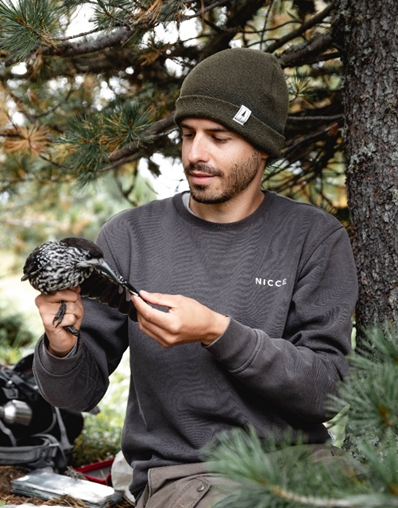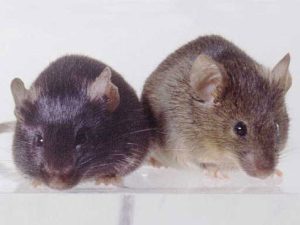In our latest post Valentin Graf, PhD student at the Senckenberg Biodiversity and Climate Research Centre in Frankfurt, presents his work ‘Individual behavior shapes patterns of bird-mediated seed dispersal’. He discusses the importance of moving from species to individual scale in ecology, shares how he overcame setbacks at the beginning of the research project, and shows how leaving the ground can help doing fieldwork.
About the paper
Most of the world’s woody plant species rely on animals to disperse their seeds. Therefore, the behavior of seed dispersers is crucial for seed dispersal. So far, most studies have focused on comparing the seed dispersal function of different disperser species. In this paper, we wanted to zoom in and take a closer look at individual behavior within a species, to find out how important individual differences are for the seed dispersal process. We used GPS trackers to record the movement of spotted nutcrackers (Nucifraga caryocatactes) during their dispersal of Swiss stone pine (Pinus cembra) seeds in the Swiss Alps. The two species engage in a close mutualistic relationship where each is heavily dependent on the other. During the summer months when pine cones are ripe, nutcrackers harvest and cache seeds of Swiss stone pine, relying on the cached seeds as a year-round food source. In turn, the Swiss stone pine relies on the nutcracker, as pine cones remain closed at maturity and require the bird to open them and release the seeds.
The study system: A spotted nutcracker carrying a cone of Swiss stone pine (Credit: Valentin Graf)
A GPS tracker being fitted to the back of a spotted nutcracker. The device will record movement data of the bird’s seed dispersal behavior.
Left: First-person view from the cockpit of the ultralight airplane used to search for individuals that moved beyond our usual study area. The airplane allowed us to cover an extensive area in a short time, and being in the air provided much better signal reception compared to standing on the ground. Right: The antenna used to receive very high frequency (VHF) signals was strapped to the wing strut of the airplane.
When analyzing the recorded movement data, we found great variation in seed dispersal behavior among our tagged birds. We identified two distinct behaviors within our population of nutcrackers: short-distance seed dispersers and long-distance seed dispersers. The two behavioral types disperse seeds to very different habitats. Short-distance seed dispersers cache seeds at high elevations in core pine habitat, while long-distance seed dispersers carry seeds to lower elevations outside of the pine’s habitat, where seeds are unlikely to germinate. Hence, the individual variation in nutcracker behavior likely shapes the fate of the dispersed seeds. Our results show that there is considerable variation in the behavior of individuals within a species, which may have far-reaching consequences for ecological processes like seed dispersal. We emphasize that individual behavior is important and should be taken into account for a better understanding of ecosystem functions.
About the research
Our team has been investigating the unique relationship between nutcracker and pine for more than a decade, producing many interesting findings but also exposing questions that still remain unanswered. Conducting field work in the Swiss Alps is exciting and brings a sense of adventure, as no two days in the field are the same. At the same time, this experience comes with its pitfalls: nature is unpredictable. On my very first day in the field, I realized that none of the pine trees had produced any seeds that year – I was witnessing a seed failure event. Therefore, capturing and tracking seed-dispersing spotted nutcrackers had to be postponed to the next year. Despite this setback, and with some delay, the study could still be conducted, and it produced important insights into the ecological role of individual behavior. On top of this, we learned more about seed masting cycles, a core driver in our system. One of our next tasks will be to better understand the drivers behind individual behavior. Why are not all birds pursuing the same seed dispersal strategy? What determines seed disperser behavior not only in this study system, but also across different systems?
About the author
I am a PhD student at the Senckenberg Biodiversity and Climate Research Centre in Frankfurt. Like many ecologists, I grew up enjoying nature and spending a lot of time in the outdoors. It was the birds that first sparked my interest for field work, and during internships in various projects I discovered that I wanted to conduct ecological research myself. Working in close contact with nature and the prospect of contributing to novel research is what drives me, and being part of an amazingly diverse and international team is exciting. Pursuing this career path can be challenging at times, but also incredibly rewarding. My advice for young students in this field: if you are driven and passionate for nature and ecology, then you are right for the job, and opportunities will come to you.
Like the blog post? Read the paper here.
Leave a comment




